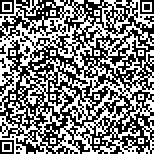下载中心
优秀审稿专家
优秀论文
相关链接
摘要

雪盖面积是高山地区和季节雪盖区水文,气象模型的重要输入因子.SAR干涉测量不仅能够生成高精度的DEM,而且能够通过重复轨道雷达信号的相干性来探测地表覆盖的变化.通过分析比较四景重复轨道ERS-1/2的SAR图像发现,裸岩,裸地,灌丛等未受到扰动的地表相干性高,湖面,雪盖等变化明显的地表相干性低.积雪覆盖后的表面,其相干性急剧隐低,利用其相干性特征可以进行积雪划分.根据上述特性,利用地物的散射强度和SAR重复轨道的相干测量进行雪盖划分,分类精度达到82%,结果表明利用SAR干涉测量的相干性特征进行雪盖制图是可行的.
For climatological and hydrological investigations,the areas covered by snow and their spatial variability are important parameters,particularly in alpine regions. Snow and ice also play important interactive roles in the regional climates through its effect of increasing surface albedo. The interferometric SAR technique not only can produce a high-resolution digital elevation models,but also can detect the changes in the surface over the orbit repeat cycle from the correlation properties of the radar echoes. With or without the snow cover,the measurement of interferometer correlation will be shown great difference over,which time describes processes occurring on the time scales of the orbit repeat time and size scales on the order of a radar wavelength. Except backscattering intensities in each scene and their changes between two passes,the coherence measurement between repeat-pass will provide another useful measurement for mapping snow covers over large areas. We compare four ERS-1 repeat pass SAR image in the Tibet plateau test area,the first one in March(with snow), the second one in May(without snow),the rest two is a tendem in September(without snow). The result shows that if the ground is completely undisturbed between viewings the signals will be highly correlated. Otherwise,the decorrelation will occur. Lake and snow cover have very low coherence between two data-tades with and without snow cover,and the coherence measurements from the bare surface and the short vegetation are significantly higher. On other way,the entire target may show very low coherence if there are great decorrelations due to other parameters,such as spatial baseline,rotation and temporal. We will demonstrate the method and result for snow mapping by using both backscattering and coherence measurements with repeat passes ERS-1 image data at the Kunlunshan Mountain,the Tibetan plateau(36o03’N, 91o00’E). For validation of this method ,we compared classification result with that derived from TM image. An accuracy of better than 82% can be achieved if we consider the classification result from TM image as the ground truth. The results show that the coherence measurements provide an effective way to map snow-covered area.

